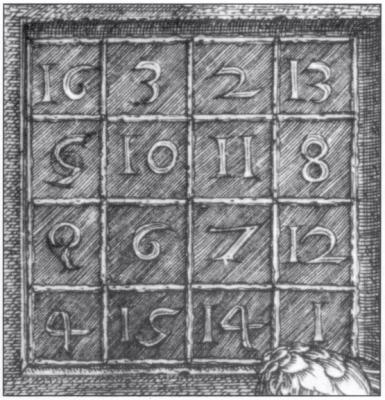... newer stories
Montag, 21. Februar 2011
DNA als Spin - Filter von Elektronen
klauslange,22:34h
Nicht nur für eine mögliche technische Anwendung, sondern auch als interessante Entdeckung für die ganz natürliche Funktion der DNA in unseren Zellen ist folgende Meldung zu werten:
http://www.g-o.de/wissen-aktuell-13022-2011-02-21.html
Dort heißt es:
Doppelhelix als Filter für Elektronenspins
Gemeinsam mit Kollegen des Weizmann-Instituts in Israel haben die Forscher jetzt eine unerwartet effektive Methode entdeckt, wie sich Elektronen nach ihrem Spin sortieren lassen. Das Experiment des Forscherteams beginnt mit Elektronen, die mithilfe von Laserstrahlung aus einer dünnen Goldschicht gelöst werden. Diese Elektronen zeigen zunächst keine Vorzugorientierung des Spins. Nachdem sie durch die etwa 20 Nanometer dicke selbstorganisierte Schicht aus doppelsträngiger DNA "geflogen" sind, ist die Spinorientierung der meisten Elektronen ihrer Flugrichtung entgegen gerichtet, sie sind also spinpolarisiert.
„Die Elektronen zeigen nach dem Durchtritt durch die DNA- Schicht sogar dann mehrheitlich eine Spinorientierung antiparallel zur Flugrichtung, wenn sie zuvor überwiegend einen parallel zur Flugrichtung ausgerichteten Spin besaßen", erklärt Zacharias. „Die DNA-Schicht wirkt also als sehr effektiver 'Spinfilter'." Rund 60 Prozent der Elektronen weisen hinterher die gleiche Spinausrichtung auf. Bisherige Filter erreichten maximal 25 Prozent Ausbeute.
Erklärung für Händigkeit der Natur?
Die Beobachtung der Forscher könnte auch Auswirkungen auf Elektronentransferprozesse in der Natur haben. Die Erbsubstanz DNA liegt in der sogenannten Doppel-Helix-Struktur vor – das heißt, sie ist schraubenartig aufgebaut, ebenso wie weitere biologisch wichtige Moleküle. Man bezeichnet sie als chiral oder händig. „Möglicherweise lässt sich die Tatsache, dass nur rechtshändige DNA und Zucker sowie nur linkshändige Aminosäuren in der Natur vorkommen, auf den von uns beobachteten Effekt zurückführen", sagt Helmut Zacharias.
Ein früher oft herangezogener Grund für die Händigkeit der Natur ist die Hypothese, dass bei radioaktivem Beta-Zerfall Elektronen mit antiparallel zur Ausbreitungsrichtung polarisiertem Spin erzeugt werden. Gerade Elektronen mit dieser Spinorientierung werden bevorzugt durch die natürliche DNA hindurch gelassen. DNA mit anderem Drehsinn würde diese Elektronen absorbieren und könnte dabei auf Dauer zerstört werden. „Ob der von uns entdeckte Effekt aber tatsächlich die Händigkeit in der Natur beeinflusst, können wir mit dem jetzigen Kenntnisstand noch nicht sagen", so der Forscher.
Im Hinblick auf die Urwort - Theorie ( siehe http://designale.blogger.de/stories/1753978/ ) von Dr. König bzw. der Komplexen Relativitätstheorie von Charon ist das ein sehr interessantes Ergebnis!!!
http://www.g-o.de/wissen-aktuell-13022-2011-02-21.html
Dort heißt es:
Doppelhelix als Filter für Elektronenspins
Gemeinsam mit Kollegen des Weizmann-Instituts in Israel haben die Forscher jetzt eine unerwartet effektive Methode entdeckt, wie sich Elektronen nach ihrem Spin sortieren lassen. Das Experiment des Forscherteams beginnt mit Elektronen, die mithilfe von Laserstrahlung aus einer dünnen Goldschicht gelöst werden. Diese Elektronen zeigen zunächst keine Vorzugorientierung des Spins. Nachdem sie durch die etwa 20 Nanometer dicke selbstorganisierte Schicht aus doppelsträngiger DNA "geflogen" sind, ist die Spinorientierung der meisten Elektronen ihrer Flugrichtung entgegen gerichtet, sie sind also spinpolarisiert.
„Die Elektronen zeigen nach dem Durchtritt durch die DNA- Schicht sogar dann mehrheitlich eine Spinorientierung antiparallel zur Flugrichtung, wenn sie zuvor überwiegend einen parallel zur Flugrichtung ausgerichteten Spin besaßen", erklärt Zacharias. „Die DNA-Schicht wirkt also als sehr effektiver 'Spinfilter'." Rund 60 Prozent der Elektronen weisen hinterher die gleiche Spinausrichtung auf. Bisherige Filter erreichten maximal 25 Prozent Ausbeute.
Erklärung für Händigkeit der Natur?
Die Beobachtung der Forscher könnte auch Auswirkungen auf Elektronentransferprozesse in der Natur haben. Die Erbsubstanz DNA liegt in der sogenannten Doppel-Helix-Struktur vor – das heißt, sie ist schraubenartig aufgebaut, ebenso wie weitere biologisch wichtige Moleküle. Man bezeichnet sie als chiral oder händig. „Möglicherweise lässt sich die Tatsache, dass nur rechtshändige DNA und Zucker sowie nur linkshändige Aminosäuren in der Natur vorkommen, auf den von uns beobachteten Effekt zurückführen", sagt Helmut Zacharias.
Ein früher oft herangezogener Grund für die Händigkeit der Natur ist die Hypothese, dass bei radioaktivem Beta-Zerfall Elektronen mit antiparallel zur Ausbreitungsrichtung polarisiertem Spin erzeugt werden. Gerade Elektronen mit dieser Spinorientierung werden bevorzugt durch die natürliche DNA hindurch gelassen. DNA mit anderem Drehsinn würde diese Elektronen absorbieren und könnte dabei auf Dauer zerstört werden. „Ob der von uns entdeckte Effekt aber tatsächlich die Händigkeit in der Natur beeinflusst, können wir mit dem jetzigen Kenntnisstand noch nicht sagen", so der Forscher.
Im Hinblick auf die Urwort - Theorie ( siehe http://designale.blogger.de/stories/1753978/ ) von Dr. König bzw. der Komplexen Relativitätstheorie von Charon ist das ein sehr interessantes Ergebnis!!!
... link (0 Kommentare) ... comment
FAQs zu 'Tyche', dem vermutlichen neuen Planeten
klauslange,22:27h
Während sich ja deutsche Blocker, die sich als Astronomen gerne soooo seriös gebärden, meist über einen eventuellen neu zu entdeckenden Planeten von Superjupiterausmaßen in der Oortschen Wolke sehr ablehnend äußern oder sich über entsprechende Meldung lustug machen, sieht die Redaktion von sciencedaily die Sache viel sachlicher und beantwortet oft gestellte Fragen zum Thema:
http://www.sciencedaily.com/releases/2011/02/110220204429.htm
Frequently Asked Questions
Q: When could data from WISE confirm or rule out the existence of the hypothesized planet Tyche?
A: It is too early to know whether WISE data confirms or rules out a large object in the Oort cloud. Analysis over the next couple of years will be needed to determine if WISE has actually detected such a world or not. The first 14 weeks of data, being released in April 2011, are unlikely to be sufficient. The full survey, scheduled for release in March 2012, should provide greater insight. Once the WISE data are fully processed, released and analyzed, the Tyche hypothesis that Matese and Whitmire propose will be tested.
Q: Is it a certainty that WISE would have observed such a planet if it exists?
A: It is likely but not a foregone conclusion that WISE could confirm whether or not Tyche exists. Since WISE surveyed the whole sky once, then covered the entire sky again in two of its infrared bands six months later, WISE would see a change in the apparent position of a large planet body in the Oort cloud over the six-month period. The two bands used in the second sky coverage were designed to identify very small, cold stars (or brown dwarfs) -- which are much like planets larger than Jupiter, as Tyche is hypothesized to be.
Q: If Tyche does exist, why would it have taken so long to find another planet in our solar system?
A: Tyche would be too cold and faint for a visible light telescope to identify. Sensitive infrared telescopes could pick up the glow from such an object, if they looked in the right direction. WISE is a sensitive infrared telescope that looks in all directions.
Q: Why is the hypothesized object dubbed "Tyche," and why choose a Greek name when the names of other planets derive from Roman mythology?
A: In the 1980s, a different companion to the sun was hypothesized. That object, named for the Greek goddess "Nemesis," was proposed to explain periodic mass extinctions on Earth. Nemesis would have followed a highly elliptical orbit, perturbing comets in the Oort Cloud roughly every 26 million years and sending a shower of comets toward the inner solar system. Some of these comets would have slammed into Earth, causing catastrophic results to life. Recent scientific analysis no longer supports the idea that extinctions on Earth happen at regular, repeating intervals. Thus, the Nemesis hypothesis is no longer needed. However, it is still possible that the sun could have a distant, unseen companion in a more circular orbit with a period of a few million years -- one that would not cause devastating effects to terrestrial life. To distinguish this object from the malevolent "Nemesis," astronomers chose the name of Nemesis's benevolent sister in Greek mythology, "Tyche."
http://www.sciencedaily.com/releases/2011/02/110220204429.htm
Frequently Asked Questions
Q: When could data from WISE confirm or rule out the existence of the hypothesized planet Tyche?
A: It is too early to know whether WISE data confirms or rules out a large object in the Oort cloud. Analysis over the next couple of years will be needed to determine if WISE has actually detected such a world or not. The first 14 weeks of data, being released in April 2011, are unlikely to be sufficient. The full survey, scheduled for release in March 2012, should provide greater insight. Once the WISE data are fully processed, released and analyzed, the Tyche hypothesis that Matese and Whitmire propose will be tested.
Q: Is it a certainty that WISE would have observed such a planet if it exists?
A: It is likely but not a foregone conclusion that WISE could confirm whether or not Tyche exists. Since WISE surveyed the whole sky once, then covered the entire sky again in two of its infrared bands six months later, WISE would see a change in the apparent position of a large planet body in the Oort cloud over the six-month period. The two bands used in the second sky coverage were designed to identify very small, cold stars (or brown dwarfs) -- which are much like planets larger than Jupiter, as Tyche is hypothesized to be.
Q: If Tyche does exist, why would it have taken so long to find another planet in our solar system?
A: Tyche would be too cold and faint for a visible light telescope to identify. Sensitive infrared telescopes could pick up the glow from such an object, if they looked in the right direction. WISE is a sensitive infrared telescope that looks in all directions.
Q: Why is the hypothesized object dubbed "Tyche," and why choose a Greek name when the names of other planets derive from Roman mythology?
A: In the 1980s, a different companion to the sun was hypothesized. That object, named for the Greek goddess "Nemesis," was proposed to explain periodic mass extinctions on Earth. Nemesis would have followed a highly elliptical orbit, perturbing comets in the Oort Cloud roughly every 26 million years and sending a shower of comets toward the inner solar system. Some of these comets would have slammed into Earth, causing catastrophic results to life. Recent scientific analysis no longer supports the idea that extinctions on Earth happen at regular, repeating intervals. Thus, the Nemesis hypothesis is no longer needed. However, it is still possible that the sun could have a distant, unseen companion in a more circular orbit with a period of a few million years -- one that would not cause devastating effects to terrestrial life. To distinguish this object from the malevolent "Nemesis," astronomers chose the name of Nemesis's benevolent sister in Greek mythology, "Tyche."
... link (0 Kommentare) ... comment
... older stories

